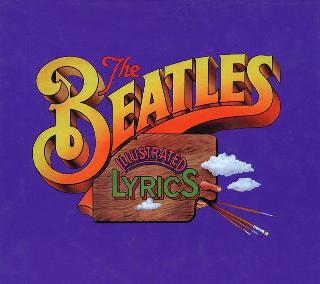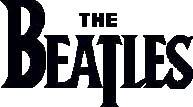Index
Home
Vorige
P.S. I Love You
Composer(s) : Lennon and McCartney
Year : 1962
Chords/Tabs: P.S. I Love You
Notes on "P.S. I Love You" (PSILY)
KEY D Major (with Aeolian inflections)
METER 4/4
FORM Intro-Verse-Verse-Bridge-Verse-Bridge-Verse-Outro (complete ending)
GENERAL POINTS OF INTEREST
Style and Form
- The form is virtually identical to that of
"Misery",
with two bridges
separated by only one verse. Even though PSILY uses a much richer set
of chords than "Misery", its verse section is still quite bound to the
home key, and for that matter, so is its bridge. Therefore, the same
avoidance of harmonic claustrophobia would seem equally applicable to
both songs, in terms of dispensing with an extra verse section before
the second bridge.
- An unusual and creative formal touch here is the way that the intro
turns out to be a subtle variation of the bridge.
Harmony
- The group of chords used in this song is much more exotic than what we've
seen in the other very early period songs we've looked at. In addition
to the standard fare of what is diatonically available within the home
key, we have the chords of the flat-VI (B flat) and flat-VII (C Major),
both of which may be said, in theoretical terms, to be borrowed from the
parallel minor key of 'd'. The very use of these chords lends an
exotic mixed-mode feeling to the song.
- The strangest chord of all in the song is the dominant 7th chord on C#,
employed in the intro as a surrogate 'V'. The naturally ocurring chord
on C# in the key of D is a *diminished* seventh chord and *that* VII chord
works nicely as a substitute V because it is the sonic equivalent of the V7
chord with the root note missing. In modifying the C# diminished chord into
a dominant 7th, the Boys throw us a curve ball in that you'd sooner expect
the latter chord to resolve to the key of F#. Against all textbook rules
and logic, they rely on the stepwise movement of all voices (C# -> D,
E# -> F#, G# ->A, and B -> A) to make it "work". Still, coming right
at the beginning as it does, it's an attention grabber.
- In addition to the chord choices, we find that several of the chord
*progressions* in this song are unsual. We're used to finding in
the typical early Beatles song such as ISHST,
the pervasive influence
of I-VI-V sorts of chord progressions which convey a strong sense of
directed kinetic motion that is the musical equivalent of Hemingway's
much celebrated use of transitive verbs. Here, in PSILY, we find two
different types of unusual chord progressions.
- The first unusual type of progression is called a "chord stream",
characterized by sliding, stepwise root movement from chord to chord.
In the verse section, we find I->ii->I, and flat-VI->flat-VII->I as
examples. This is a technique is most closely associated with either
early 20th century Impressionism or Jazz and it happens to break one
of the standard old-fashioned rules against using parallel octaves and
fifths between chords. Aesthetically, it suggests a languid sensuality.
- The second unusual type of progression is called a "deceptive cadence",
characterized by the V (dominant) being followed by something other than
the I chord. In the verse section, yet again, we find examples of the V
being resolved in one case to the plain vi chord, and later on to the
flat-VI. Aesthetically, it suggests a last minute retreat from coming
to closure; a musical approach/avoidance.
Arrangement
- The look and feel here is decidedly *not* that of rock-n-roll. It's rather
more like lounge-pop or Latin dance music, in large part due to the tempo,
beat, and choice of percussion instrumentation.
- The vocal arrangement presents Paul in the solo spotlight with a
particular style of backing vocal from John and George. Though the
backing part persists virtually all the way through, there is more
interesting detail to it than initially meets the eye.
- Note, for example, how in all verses except the last one, the backers
sing behind isolated words only, making for a musically italic/bold effect.
In the last verse, yet again to avoid foolish consistency, this effect
is dropped in favor of their singing all the way through with Paul.
- Similarly in the second bridge, we have the successive interjections by
solo voices in between the phrases for the sake of some colorful variety.
- The following piece of triva is usually eclipsed by the
"Love Me Do"
story, but it should be noted that it is Andy White (again) on the
drums in this song; poor Ringo plays only the maracas.
SECTION-BY-SECTION WALKTHROUGH
Intro
- Even though the words of the bridge are repeated in this intro, the
resemblance between the intro and the bridge is cleverly disguised
by the addition here of the C#7 chord, and the fact that in the bridge,
we're used to hearing an additional vocal part which harmonizes a third
above the melody:
-------------- 3X --------------
|G C# |D |D A |D |
D: IV VII 7 I V I
#5
#3
- By the way, this is yet another convergent start away from the home key.
The singers come right in on the first beat, without a cue.
Verse
- The verse is not only an unusual ten measures long, but is made up of
four phrases of several different lengths:
"Treasure these few words ...." "Keep all my love ..."
<------ phrase #1, 3 measures --------><- phrase #2, 2 measures ->
|D |e |D |A |b |
I ii I V vi
"P.S I love you ...." "You, you, you ...."
<--- phrase #3, 2.5 measures ---><--- phrase #4, 2.5 measures --->
|A |B-flat |- - - C |D |- |
V flat VI flat VII I
- Articulation of the phrasing is nicely aided by the harmony with its
multiple deceptive resolutions of V, first to vi, then to flat vi, then
*finally* to I, but even then, only via the flat VII!
- The melodic arch of the first three phrases has a bottom-heavy asymmetry
that is balanced out by the dramatic swing upward of an octave in the
final phrase. Note the repeatedly expressive use of appoggiaturas; i.e.,
on the words "together", "forever", "P.S", and the middle "you" of the
final phrase.
Bridge
- The contrast of this bridge to its surrounding verses is manifest in its
simple chord choices and regularized shape. We're on a strict harmonic diet
here of I-IV-V, and the eight measure section is articulated into two
phrases of four measures each:
-------------- 3X --------------
|G |D |D A |D |
IV I V I
Outro
- In typical fashion, this outro grows out of the final measures of the
final verse and presents the formulaic triple-repeat of the little hook
phrase in a relatively straightforward manner.
SOME FINAL THOUGHTS
- PSILY is ultimately an ironic blend of both backward and forward
looking influences. On the one hand, the relatively soppy lyrics and the
pop arrangement are reminiscent of their cover repertoire from the Decca
audition period. By the same token, there's a technical sophistication here,
especially in the harmony and uneven phrasing, which looks well beyond many
of the other apparently more original songs from the early EMI days.
- Aside from the sophistication of any specific technical device used here
per se, the most creative touch of all (IMHO) is in the way that the
the successive deceptive cadences in the verse provide an exquisitely
realistic shyness and emotional "playing footsie" that otherwise
belies the the readymade paper-cut valentine of the words.
Regards,
Alan (awp@bitstream.com *OR* uunet!huxley!awp)
---
"Quite right, invites to gambling dens full of easy money and fast women,
chicken sandwiches, and cornets of caviar, disgusting!" 080591#02M
---
Copyright (c) 1991 by Alan W. Pollack
All Rights Reserved
This article may be reproduced, retransmitted, redistributed and
otherwise propagated at will, provided that this notice remains
intact and in place.
Ook op Please Please Me:
Ook op On Air - Live At The BBC Vol 2:
(c) 2024 Serge Girard


 (c) Alan Aldrigde, The Beatles Illustrated Lyrics
(c) Alan Aldrigde, The Beatles Illustrated Lyrics